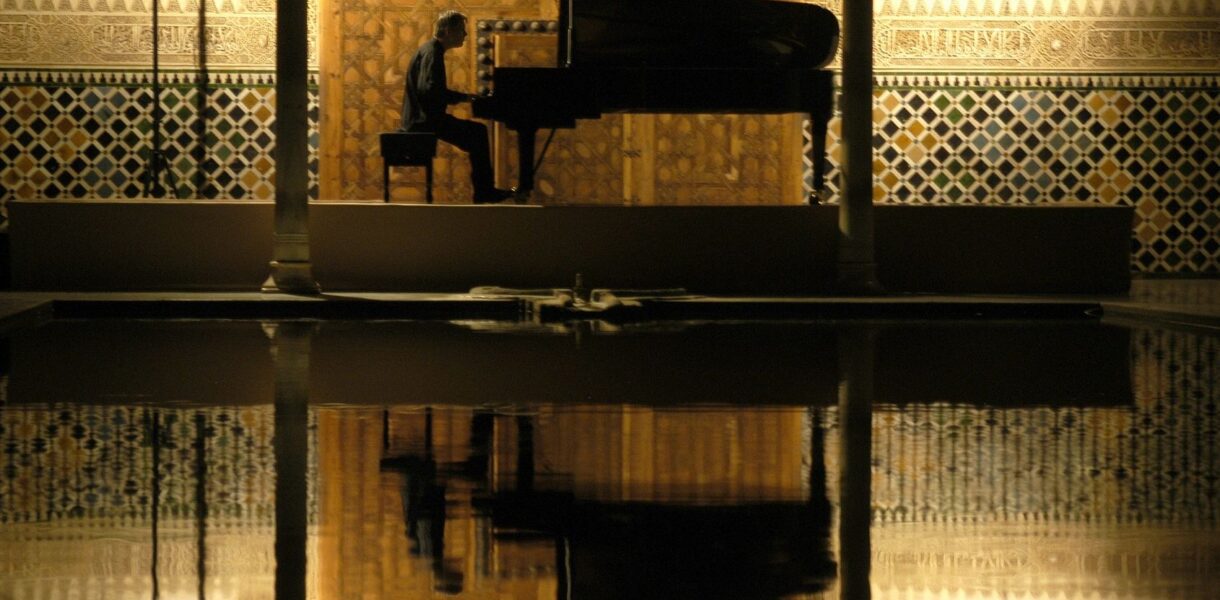Ravel’s Sonatine is so beautiful. The Sonatine was my introduction to Ravel’s works a few years ago, and I was infatuated from the moment I heard it. The piece yearns for what is yet to come, but is magical within the current moment. Alicia de Larrocha plays lightly and elegantly. She appreciates the beautiful harmonies and the vast textures within the soaring work. But what I love most is how underspoken this recording is. This Sonatine is so difficult to execute, but it’s not meant to be a virtuosic piece by any means. So many recordings cause the listener to be in awe of how difficult it sounds, but few recordings allow the listener to only hear the pure music which lies underneath all of the notes.
Maurice Ravel, a French composer of the 19th and 20th centuries, rejected the claims that he was an impressionist, but now he is widely recognized as one of the greatest impressionistic composers along with Claude Debussy. While Ravel’s output of work wasn’t massive since he was a slower composer than others, he is known for his painstaking attention to detail. He wrote many of his larger works for piano first and then arranged them for orchestra or a chamber ensemble. Even in the Sonatine, a piece for solo piano, one can hear many layers and embellishments within the soundscape, a sort of orchestration for one instrument.
Ravel composed the first movement of the Sonatine for a competition sponsored by a fine arts magazine in 1903. The composition required the entry to be a first movement no longer than 75 measures. Despite being the only entry in the competition, the first movement was slightly too long and the magazine, nearing bankruptcy, cancelled the competition. Two years later, Ravel completed the 2nd and 3rd movements. The work mirrors a typical classical form, given the name “Sonatine” as a shortened form of sonata. It’s infused with modern harmonies and techniques, a fine example of neoclassicism.
Alicia de Larrocha was a Spanish pianist. I personally love Alicia De Laroccha because her style is very thoughtful and lyrical. It’s evident in this recording that she’s enjoying what she’s playing, and she plays it well – it’s a very inspired performance!
In the first movement, I am reminded of a gently rocking boat, the waves lapping against the sides underneath the star-speckled sky. Alicia de Larrocha presents a refined character right from the beginning, and doesn’t hesitate in her insistence of the music’s uniquely characteristic impressionism. The opening of this movement is really interesting. The key signature implies F# minor, but the main theme seems to oscillate between C# minor and F# minor, leaving the listener uncertain about what the key is supposed to be and what direction the opening is heading. Listen to how the music leans forward, and falls back to F# minor from C# minor, then back to F# minor again. The theme begins with this sigh in a perfect fifth, a motif that is developed across every movement. It’s an extremely difficult opening to control! The melody needs to be balanced well above the sixteenth note line and each phrase must be incredibly light and legato. If I were performing this piece, I might consider giving some of the inner voices a little more shaping. But I do enjoy how although the running line is covered, it’s not completely hidden and still provides movement. Also, the tempo choice is fitting for this movement. It’s titled Modéré, or moderately, but far too often the movement is played quickly and frantically. It’s not too slow, either, because the tempo isn’t strictly in time but swirls around in a natural way.
The idea of motion is a major theme throughout the first movement. In the opening, the melody isn’t fast, but there are these underlying sixteenth notes which flow very gracefully. Then, at 0:23, the atmospheric voices change to eighth notes. Listen to how Alicia de Larrocha holds back accordingly! There’s a big character change here. The opening is moving, and this theme is more stationary. There are many tempo changes, even just in the exposition alone, but she makes them sound smooth and indistinguishable. It’s like someone is breathing, and the tempo is fluctuating. But it never seems like a purposeful change in tempo. This recording shows a wonderful tone quality as well. I’ve heard it said that the piano is an inexpressive instrument. To be fair, we can’t have a big vibrato and the same singing sound that resonates from a bowed string instrument. However, there are so many other things that make the piano expressive! In this recording, the upper register is sparkling, the middle register is warm, and the bass is deep. It’s not just because of the piano, it’s how Alicia de Larrocha plays it! For example, see how 2:18 glistens, and 2:30 is warm and blended. It’s so wonderful, and a joy to listen to!
In the second movement, we really get to see how this work was influenced by the classical period. The movement is titled as the “mouvement de menuet,” a minuet tempo. Within classical works, the minuet and trio was a popular form, with one minuet and a second minuet section called a trio because it was typically scored for three instruments in orchestral and chamber works. Since this Sonatine is a shortened version of a sonata, there isn’t an official trio section, but you could argue that the section beginning at 4:58 functions as a classical trio. I absolutely adore how Ravel takes some widely used classical form and makes it his own. For a dance, the music is quite slow, but it has these gorgeous little accents (at 4:26, for example) which bring out the dancing image. Alicia de Larrocha’s playing in this movement shows the perfect blend of classical appreciation and an enjoyment of new impressionistic styles. It’s light, colorful, and heartfelt. Again, it’s delicate, but far from feeble.
At first the second movement is what one would expect harmonically. There are a few interesting harmonies woven in, but nothing completely out of the ordinary. Then, at the second theme at 4:58, I’m always pleasantly surprised. For example, the movement is in D♭ major but the harmony snakes its way to some B♭ major chords! You wouldn’t usually expect to find B♭ major in the context of D♭ major, because B♭major contains a D♮. I think these harmonies add to the texture and colors of this movement and make it delightful within the details. Perhaps it’s the type of thing you wouldn’t notice if you were listening to the Sonatine as background music, but if you really listen closely you can hear all the little intricacies.
Wow, the third movement is stunning. I must say, this is by far the most light and dazzling recording I’ve heard of this movement so far. It sounds like ocean nymphs jumping out of sparkling water. I mean, just looking at the music for this movement, the first thing that comes to mind is the sheer number of notes. It has almost entirely running sixteenths or triplets, which gives a lot of opportunities to interpret, add personal flair, and make it special! But what sets Alicia de Larrocha’s performance apart from other pianists is that it seems as if not much is going on. Instead of heavy, drudging music, I hear melodies, clearly voiced through each hand, and I hear beautiful rounded phrasing, with fresh articulations and dynamics that accentuate the character of the piece.
It sounds inventive and liberating. I hear many recordings in which the first three bars are heavy, and consequently those opening measures sound repetitively clunky. This causes the whole performance to appear forced and unnatural. But here, the music never stops moving. Alicia de Larrocha has a different vision for this performance, and I may never go back to seeing the piece in a different way! Some of the harmonies can often sound murky and overpedaled in other recordings, for example at 7:52 , but Alicia de Larrocha plays them clearly instead, so the music sounds like it has intention. You can hear some secondary melody in the left hand, and it transcends like a bell into the glistening 8:06. Shortly after, at 8:13, the sound is deeper and warmer, but never cumbersome. Another one of my favorite moments is the deep bass note, coming into 8:46. And in the section after 9:00, it sounds like everything is underwater!
I can never get enough of the works of Ravel. This piece is simply a delight to analyze and listen to. I’m always listening to new impressionistic music, because it never fails to enthrall me. Alicia de Larrocha’s interpretation is breathtaking! It’s dazzling and glistens. It’s a true masterpiece of a performance by an amazing pianist.



